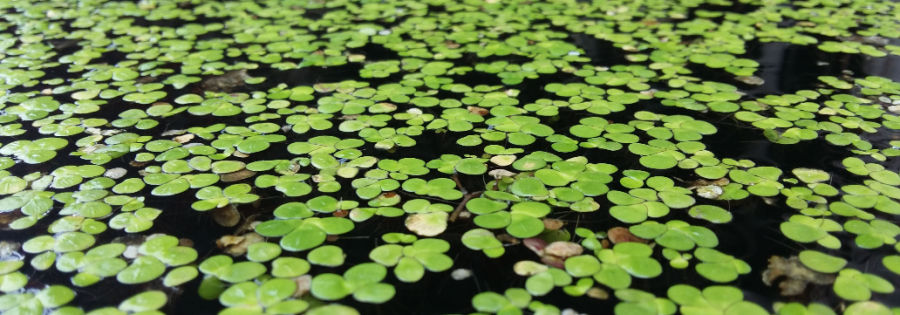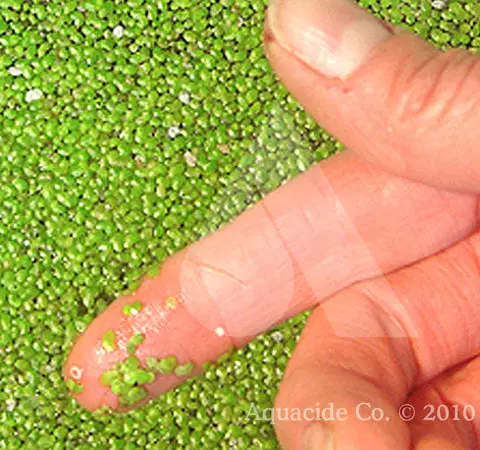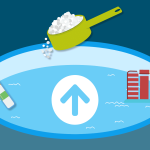Dealing with duckweed infestation in a pond can be a challenging task for pond owners and managers. Duckweed, a tiny floating aquatic plant, can quickly spread and cover the entire surface of a pond, causing a range of issues such as oxygen depletion, fish habitat degradation, and an unsightly appearance. However, with the right approach and methods, it is possible to effectively control and eliminate duckweed from a pond. In this article, we will explore some of the most effective ways to get rid of duckweed and restore the health and beauty of your pond.

Credit: www.pinterest.com
Understanding Duckweed
Before diving into the methods of eliminating duckweed, it’s important to understand the nature of this aquatic plant. Duckweed (Lemna minor) is a free-floating, invasive plant that thrives in nutrient-rich water bodies, especially those with high levels of nitrogen and phosphorus. It reproduces rapidly, forming dense colonies that can quickly cover the entire surface of a pond. The small, round leaves of duckweed are often mistaken for algae, but they are actually flowering plants that can quickly overtake a pond if left uncontrolled.
Manual Removal
One of the most straightforward methods of controlling duckweed is through manual removal. While it may be a labor-intensive process, physically skimming the duckweed from the surface of the pond can provide immediate relief and prevent further spread. Using a fine-meshed net or a pond skimmer, carefully remove the duckweed from the water’s surface, taking care to minimize disturbance to the pond’s ecosystem. Regular and consistent removal is essential to prevent the duckweed from regrowing and spreading further.
Aeration
Introducing aeration to the pond can help disrupt the growth of duckweed. Aeration systems, such as fountains, aerators, or diffused air systems, can increase the oxygen levels in the water and create a more hospitable environment for desirable aquatic plants and organisms while making it less favorable for duckweed to thrive. By improving water circulation and reducing nutrient buildup, aeration can help inhibit the growth and spread of duckweed in the pond.

Credit: www.coastalspray.com
Biological Control
Another effective approach to managing duckweed is through the introduction of natural predators and competitors. Fish species such as grass carp and koi are known to feed on duckweed and can be introduced to the pond to help control its growth. Additionally, some waterfowl species, such as ducks and geese, are also known to consume duckweed. However, it’s important to carefully consider the potential impacts of introducing new species to the pond and ensure that it aligns with local regulations and environmental considerations.
Chemical Treatments
When manual and biological methods are not sufficient, chemical treatments can be employed to control duckweed infestations. Herbicides specifically formulated for aquatic use can be effective in targeting and eliminating duckweed. However, it’s crucial to use these treatments with caution and in accordance with local regulations. Careful consideration should be given to the potential impacts on other aquatic life and water quality, and professional advice should be sought before using any chemical treatments in a pond environment.
Nutrient Management
Addressing the underlying cause of duckweed infestation involves managing the nutrient levels in the pond. Excessive nutrients, particularly nitrogen and phosphorus, can fuel the rapid growth of duckweed. Implementing strategies to reduce nutrient inputs, such as minimizing fertilizer runoff, managing animal waste, and controlling sediment erosion, can help prevent the recurrence of duckweed infestations. Additionally, the establishment of buffer zones and wetlands around the pond can help filter out excess nutrients before they reach the water, contributing to long-term duckweed control.
Physical Barriers
Installing physical barriers or pond covers can help prevent duckweed from spreading and provide a targeted approach to control its growth. Floating barriers, such as baffle curtains or floating islands, can be strategically placed to contain and limit the spread of duckweed within the pond. These barriers can also help in concentrating the duckweed for easier manual removal, contributing to a more effective and sustainable control strategy.
Maintaining Balance
Ultimately, achieving long-term control of duckweed in a pond requires a holistic approach that focuses on maintaining a balanced and healthy aquatic ecosystem. Regular monitoring of water quality, nutrient levels, and plant and animal populations can provide valuable insights into the overall health of the pond and help identify potential issues before they escalate. By promoting biodiversity, minimizing nutrient inputs, and implementing sustainable management practices, pond owners can create an environment that is less conducive to the growth of duckweed and more resilient to future infestations.
Conclusion
Dealing with duckweed infestations in a pond requires a combination of proactive management strategies, including manual removal, aeration, biological control, nutrient management, and, when necessary, targeted chemical treatments. By addressing the underlying causes of duckweed growth and implementing effective control methods, pond owners can restore the health and beauty of their ponds while promoting a balanced and thriving aquatic ecosystem. With careful planning and consistent efforts, the challenges posed by duckweed can be effectively managed, allowing pond enthusiasts to enjoy their water features to the fullest.





